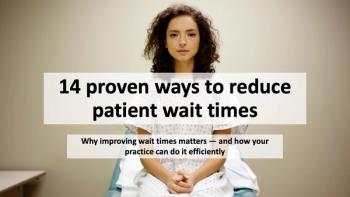
Strengthen care by building authentic partnerships with patients
Today’s patients are savvy healthcare consumers seeking access to trusted healthcare content and digital health technology that empowers them to make educated care decisions throughout their health and wellness journey.
One of the key learnings to come out of the COVID-19 pandemic is the importance of effective patient partnerships. When routine medical care and elective procedures slowed down—or came to a halt—physician practices had to quickly find new ways to engage patients and ensure continuity of care. The rise in telehealth supported the provision of routine care, while keeping patients and providers safe during the pandemic. And physician practices transformed their communications to engage and connect with patients, relaying important messages about COVID-19, as well as sending targeted messages promoting ongoing adherence to health and wellness regimes. As physician practices begin operating in this “new” normal, now is an important time to build upon these efforts and move beyond traditional patient engagement strategies towards effective patient partnership models.
Today’s patients are savvy healthcare consumers seeking access to trusted healthcare content and digital health technology that empowers them to make educated care decisions throughout their health and wellness journey. As front-line caregivers, physicians can leverage their close relationships with patients to promote shared decision-making and reinforce positive patient behavior.
Building trust during every patient touchpoint
The most effective patient partnership models provide consistent, trustworthy information and support the patient at every touchpoint. While limited staffing and time constraints often make this level of communication challenging, advances in technology are helping practices maintain high-levels of engagement. Regardless of the method and type of communication (i.e., digital or in-person, short or long, daily or infrequent) the message should leverage the same guidance that clinical care teams use for evidence-based decision-making. It’s important, too, for the tone of the communication to emulate the nurturing experience of a clinical professional who listens with empathy and responds without judgement. There are five steps providers can take to help patients make the right care choice at the right time, ultimately improving clinical, financial, and quality outcomes.
Five steps to building effective patient-partnership models
1. Education
Patient education is the baseline level for generalized patient engagement across the enterprise. The starting point is standard in most physician practices today—providing patients with educational materials such as patient summaries and written materials on new medications to help them better understand their condition(s) and available treatment options.
2. Engage
Engagement deepens a patient’s understanding of overall health and wellness and motivates them to take a greater role in their health and healthcare services. But it also requires that physician practices shift from a one-size-fits-all approach of informing patients to multiple communication and education mediums. This includes addressing concerns around socioeconomic status, culture, race, gender, or sexual orientation that unaddressed could marginalize patients or create unnecessary barriers to care.
3. Activate
Better informed and better engaged patients become more active in their care and are more likely to participate in preventive care and wellness activities. At this stage, patients shift from reactive care, within a health episode, to proactive health and wellness care. Informed and engaged individuals activate to become better patients who seek wellness exams and screenings, among others.
4. Coach
Coaching helps facilitate the transition from transactional care to longitudinal care. Having a health coach on-staff leads to greater patient satisfaction and helps patients adhere to their treatment and wellness plans. Better adherence leads to fewer hospitalizations and readmissions, contributing to improved outcomes and quality, while reducing the overall cost of care. Remote monitoring capabilities support coaching and care management to ensure patients receive timely advice from a trusted source. Advances in technology, such as automated chat box capabilities and virtual visits are furthering this communication, creating new touchpoints, and forging true partnerships between patients and the care team.
5. Partner
Partnership is the final, aspirational step of the patient-provider relationship. Patients are valued partners of the care team and are incentivized to improve health outcomes. Partnership supports whole-person care through real-time, personalized interaction throughout the customer lifecycle.
This five-step partnership model helps physician practices assess the maturity of their patient engagement programs and provides short- and long-term clinical and business strategies for initiating, or improving, patient engagement efforts. Every practice will have different needs based on current initiatives and patient demographics. Physician practices should focus on approaches to patient engagement, activation, coaching, and partnership that align with existing business goals, quality initiatives and financial objectives.
Patient education has been, and will continue to be, a critical part of the overall care experience. However, to achieve clinical, financial, and quality metrics, physician practices must view education efforts as the first, baseline step in the patient partnership journey. Physician practices must build trust through purposefully designed, evidence-based solutions that complement the in-person care experience. Combined, these efforts encourage active participation in the care process and drive sustained behavior change. Patients will be confident in their ability to make their own care decisions and care teams will be confident that patients are making informed choices.
About the Author
Jason Burum is a healthcare industry thought leader with more than 20 years’ experience leading and deploying cloud-based (SaaS) digital health and collaborative clinical enterprise workflow solutions.
Newsletter
Optimize your practice with the Physicians Practice newsletter, offering management pearls, leadership tips, and business strategies tailored for practice administrators and physicians of any specialty.








